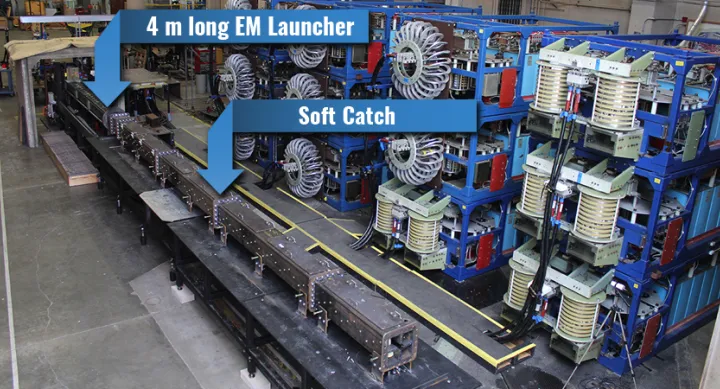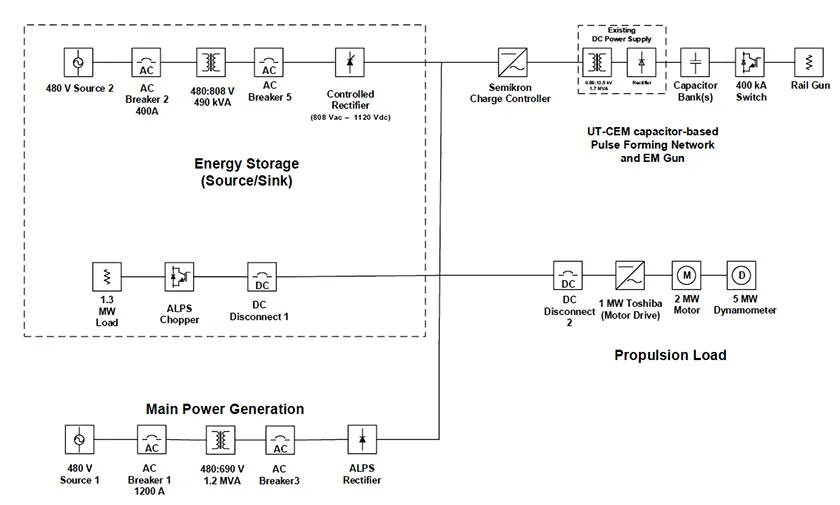
Emerging high-power electric weapons and sensors are creating significant challenges for naval power systems. Currently, the Electromagnetic Railgun (EMRG) is the single most challenging mission system, with the current architecture requiring repetitive charging of the capacitor-based pulse forming network (PFN) at multi-megawatt power levels. To provide engineering data need for integration of an electromagnetic gun into a ship power system, UT-CEM leveraged related research and re-configured its power system testbed to incorporate an existing 12 MJ capacitor-based PFN and a 4 m long x 54 mm bore electromagnetic launcher.
A novel feature of the EM Launch system is that it features a Soft-Catch capability that enables experiments on electronic circuits exposed to the extreme acceleration and dynamic in-bore magnetic fields of the railgun. The image above shows the capacitor-based PFN, EM Launcher and Soft-Catch system in the laboratory.
The ultimate goal of this experimental project is to demonstrate concurrent operation of two transient mission loads and a propulsion load using energy storage emulation to manage power flow on the main dc bus. The initial goal of the project will be repetitive EMRG operation from the microgrid using energy storage emulation to manage power flow on the dc bus. The initial demonstrations will be configured with a single power generation element and only propulsion loads; this architecture is shown in Figure 1.

Figure 1. EMRG power testbed configuration
This topology minimizes power conversion control programming to control project cost. Additional demonstrations with emulation of second transient mission load will be done when resources permit. A propulsion load will be represented by the existing high speed induction motor and dynamometer. Initial activities include reconfiguration of the power system testbed to enhance performance and support integration of the EMRG.
Once power conversion controls have been developed, the system can be reconfigured with a second power source and a second controlled mission load can be integrated to represent a transient duty pulsed load such as a laser or other directed energy weapon. Two power sources will feed the dc bus through transformers and the existing passive and active rectifiers (passive/active rectification is also possible using existing Semikron power conversion module but this requires additional programming). A third ac source (from a parallel tap on the transformer secondary) will feed into the energy storage emulation hardware to simulate energy sourced from the store.
The physical interface between the power system testbed and the EMRG system is through a Semikron power conversion module configured as a solid-state variable voltage source feeding an existing step up transformer and high voltage rectifier for charging the capacitive energy store.
Contact

Dr. Robert Hebner - r.hebner@cem.utexas.edu
512-232-1628
Projects

Electric Ship
The Center for Electromechanics has a major research program to improve electric ship technology.

Microgrid EM Launch Integration
Emerging high-power electric weapons and sensors are creating significant challenges for naval power systems.

HIL Testing
Experience with microgrid technology demonstration programs revealed the need for an integrated high speed hardware.


